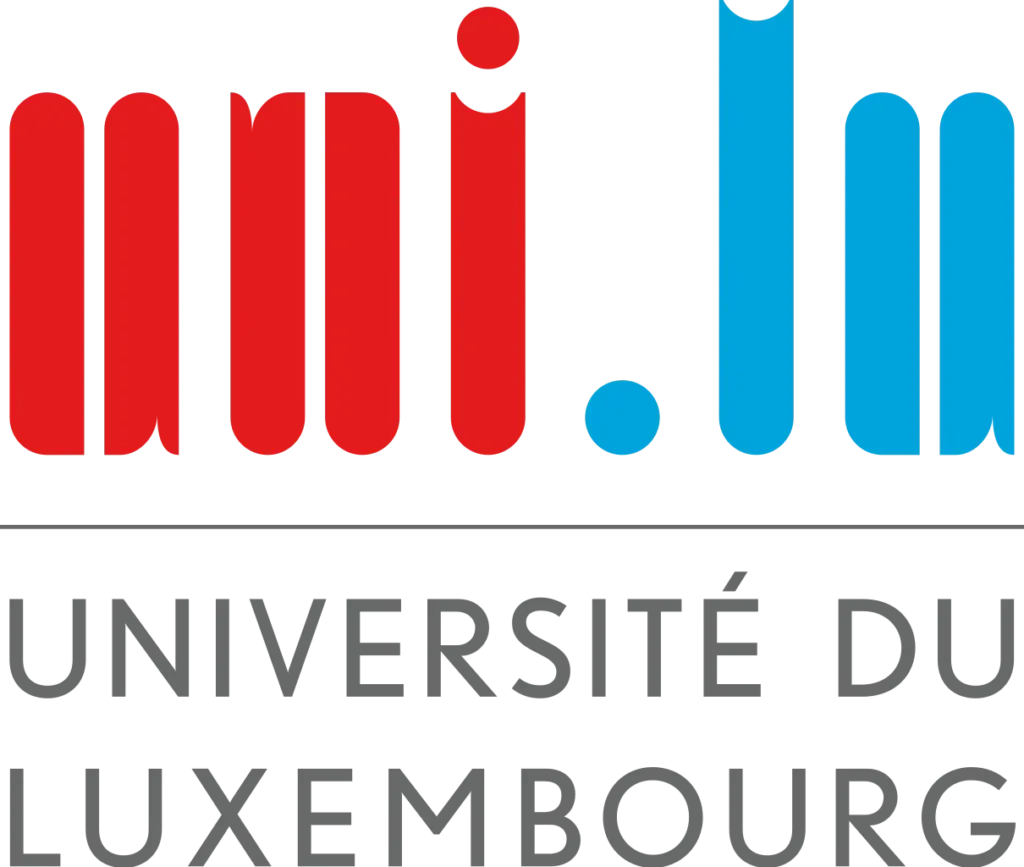University of Luxembourg

About
Industry & location
The University of Luxembourg is a leading educational and research institution located in Luxembourg. Known for its international outlook and multilingual environment, the university excels in fields such as life sciences, engineering, IT, and data-driven research. It fosters interdisciplinary collaboration and is committed to addressing global challenges through cutting-edge innovation and research.
Product & service
The University of Luxembourg is a leading educational and research institution located in Luxembourg. Known for its international outlook and multilingual environment, the university excels in fields such as life sciences, engineering, IT, and data-driven research. It fosters interdisciplinary collaboration and is committed to addressing global challenges through cutting-edge innovation and research.
Mission
The University of Luxembourg strives to foster innovation, interdisciplinary collaboration, and scientific excellence. Its mission is to empower students and researchers to push the boundaries of knowledge through cutting-edge research and education. By addressing global challenges and promoting sustainable development, the university contributes to societal progress both in Luxembourg and on the global stage.
The challenges
Scaling infrastructure
The University of Luxembourg was rapidly expanding, leading to increased pressure on its IT infrastructure. The existing setup struggled to handle the growing number of users and the diverse needs of research and educational projects, making it clear that scalability was a major concern. The university required a solution that could adapt to future demands while maintaining performance and stability.
Lack of flexibility in resource management
The rigid infrastructure in place limited the university’s ability to quickly respond to the dynamic requirements of its users. Each department had varying needs in terms of computing power, storage, and networking resources, yet the lack of flexibility in the current system made it challenging to provision and allocate resources efficiently. This lack of agility was hindering the university’s ability to innovate and meet its academic goals.
Manual and time-consuming processes
The University of Luxembourg relied heavily on manual processes for provisioning resources and managing its infrastructure. This resulted in delays, increased the risk of human error, and slowed down critical operations. The IT team needed a solution that would enable automation of routine tasks, allowing them to focus on more strategic initiatives and improving overall efficiency.
Ensuring security and compliance
As a public institution, the university had to meet stringent academic, governmental, and industry-specific regulations. Ensuring the security of sensitive research data and maintaining compliance with various policies was a continuous challenge. The existing infrastructure lacked robust tools for managing security and compliance, leaving the university vulnerable to potential breaches and compliance risks.
The solutions
Implementing scalable cloud infrastructure
To address the university’s need for scalability, a flexible and future-proof cloud platform was implemented. By adopting OpenStack, the University of Luxembourg gained a cloud infrastructure capable of dynamically adjusting to the institution’s growing demands. This solution allowed them to provision resources as needed, ensuring seamless performance even as the number of users and projects increased.
Enhancing flexibility with on-demand resource allocation
With the new cloud environment, the University of Luxembourg was able to offer on-demand resource allocation, enabling departments to tailor computing power, storage, and networking resources according to their specific needs. This provided the university with the flexibility to support a wide range of research and educational initiatives while improving overall resource management and responsiveness.
Automating processes for efficiency and agility
Automation played a key role in transforming the university’s IT operations. Through the integration of cloud automation tools, routine tasks such as resource provisioning, scaling, and monitoring were streamlined. This significantly reduced manual intervention, minimized the risk of human error, and allowed the IT team to focus on strategic projects. The university’s operations became more agile, with faster deployment of applications and services.
The results
Improved scalability and performance
With the implementation of OpenStack, the University of Luxembourg saw significant improvements in both scalability and performance. The platform allowed the university to efficiently manage increasing user demands and the growing complexity of research projects, ensuring the infrastructure could support expansion without sacrificing performance.
Enhanced flexibility and resource utilization
The university benefited from enhanced flexibility, as departments could now allocate resources on-demand to meet their unique needs and priorities. This improvement allowed for more efficient use of computing power, storage, and networking resources, reducing waste and optimizing resource utilization across the institution more effectively.
Drastically reduced manual workload
The automation of routine IT tasks, such as resource provisioning, scaling, and system monitoring, resulted in a significant reduction in manual workload for the IT team. Processes that previously took hours or days were now completed in a matter of minutes, increasing operational efficiency and enabling faster deployment of critical applications.
Increased agility in research and development
With the new cloud platform in place, the university was able to quickly respond to the dynamic needs of research and educational projects. The agility of the new system accelerated innovation, enabling researchers and students to access the necessary resources promptly, thereby speeding up research timelines and improving educational outcomes.
Strengthened security and compliance
The enhanced security features of the new platform ensured that sensitive research data was fully protected. Automated compliance checks and governance tools helped the university maintain adherence to academic, governmental, and industry regulations, reducing the risk of data breaches and ensuring peace of mind for all stakeholders.
Cost efficiency and future-proofing
By adopting an open source cloud platform, the university achieved significant cost savings compared to proprietary solutions. The flexible nature of the platform allowed for future expansion without incurring significant additional costs. This provided a future-proof solution that would continue to meet the university’s evolving needs while maintaining cost efficiency.
